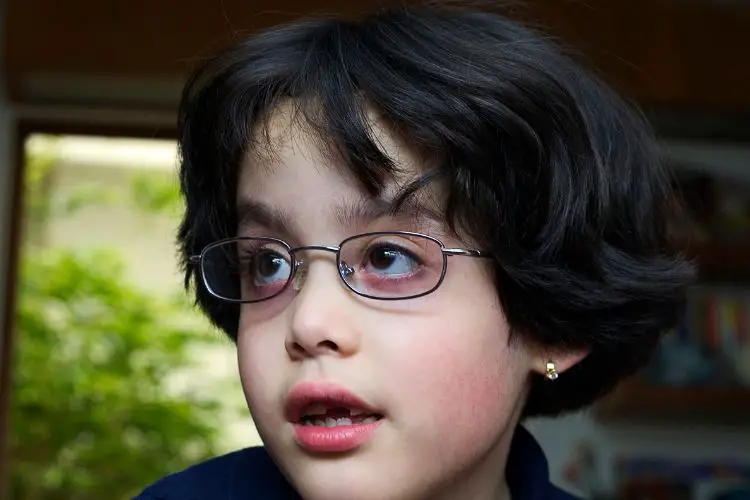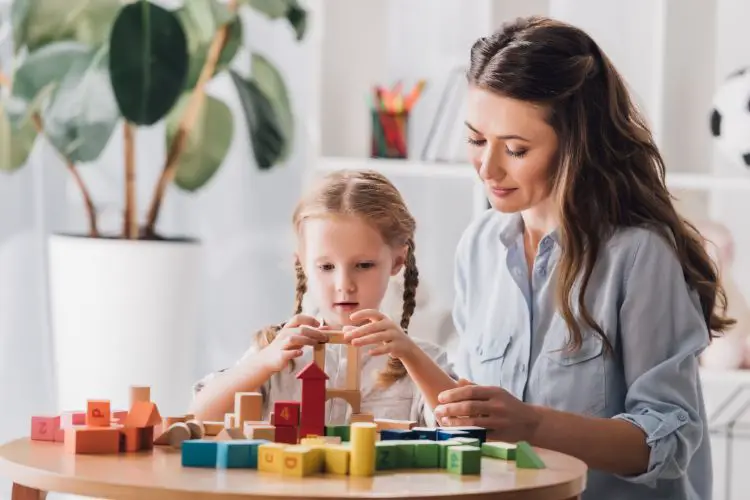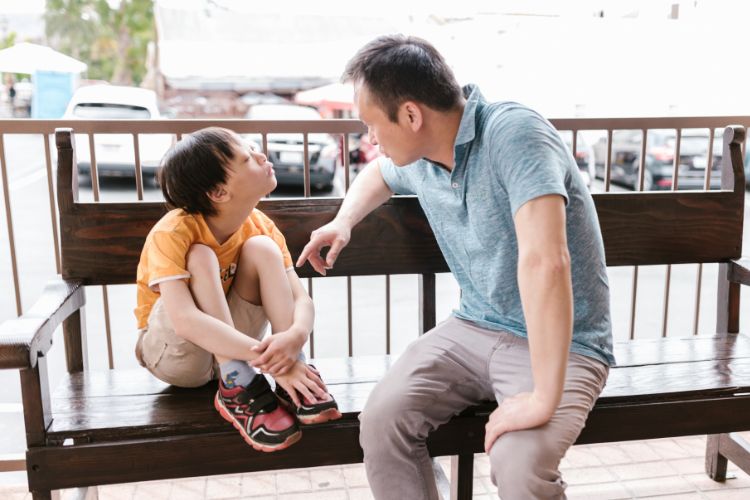Parenting a child with ASD brings forth a unique set of joys and challenges but how do you support autism fixation on one person? Intense preoccupation with a particular individual can be both positive and negative but does serve a role in the life of a child with autism. Understanding the neurological basis for the fixation will help to guide a way forward in fostering healthy social development.

This intense preoccupation with a particular individual, whether it’s a family member, friend, or even a fictional character, can be both heartwarming and perplexing. As parents of children with autism, we need a deeper understanding of this phenomenon and how to offer practical strategies to support your child’s social development while embracing their fixation tendencies.
The Nature of Autism Fixation on One Person
Fixation, often characterized by an unwavering focus on a specific subject or person, can be a common trait observed in children with autism. If individuals with autism show signs that one person is the subject of their fixation, it may lead them to seek comfort and companionship from that individual. While this can foster a deep emotional connection, it’s important to recognize that fixation can also pose challenges to your child’s ability to engage with a broader social circle.
It can also cause issues if their obsessions routines and rituals are too imposing on that person. While a range of behaviors could be present, these might include some or all of these:
- touch them constantly
- repeat everything they say
- mimic their movements
- start obsessions with the same interests
- dressing like the person
Navigating the Positive and Negative Effects
Scholarly research suggests that autism fixation on one person can have both positive and negative effects on a child’s development. On the positive side, a fixation of this kind may provide a sense of predictability and stability. This happens as your child forms a genuine bond with someone who understands and accepts them.

For the neurodiverse child, this autism fixation on one person may feel like a cozy blanket that wraps them in comfort. When they’re with that person, they might light up, feeling understood and at ease. Their shared experiences become precious moments that boost their self-esteem and emotional well-being. Just like a best friend who knows all your secrets, this connection offers them a sense of belonging.
However, if the result of that bond becomes overbearing or unrealistic, it’s crucial to strike a balance between nurturing this connection and encouraging your child to interact with a diverse range of people. Over-reliance on a single person may limit their social growth and potentially lead to feelings of isolation and frustration, both of which can be displayed through unwanted behavior.
This challenging zone can lead to the person no longer wanting to spend time with them, or wanting to distance themselves when they are with them. This can lead to rejection and isolation or even withdrawal. In some cases, it may cause behavior that lashes out at the subject of the child’s autism fixation on one person. None of those outcomes are wanted so as you learn more about the role of hyperfocus (which can be a superpower rather than a hinderance), you will learn 7 strategies you can use to help you nurture rather than control damage.
The Role of Hyperfocus and Cognitive Processing
Unlocking the power of hyperfocus can help to shape your child’s autism fixation on one person. Hyperfocus, a state of intense concentration, often accompanies fixation in children who are neurodiverse. Research indicates that this heightened attention to detail in people with autism can influence how your child perceives the world around them. A study by Baron-Cohen, S. et al. (2009) suggests that individuals with ASD exhibit remarkable attention to detail, contributing to their fixation tendencies. This hyperfocus can be channeled positively by incorporating engaging activities that align with your child’s interests while gradually introducing them to new social experiences.

Picture your child’s brain as a treasure hunt map, with different areas lighting up when they’re focused on something. Hyperfocus is like a magnifying glass that makes one spot on the map glow extra bright. This ‘glow’ represents intense concentration, and it plays a starring role in their fixation.
Think about when your child dives into a puzzle they love. They might spend hours sorting through the pieces, fascinated by the details, and absorbed in the challenge. This deep dive into an activity is their hyperfocus in action. When they’re fixated on a person, it’s like they’re putting that same laser-like attention into understanding every little thing about them.
So, how can you use this hyperfocus to nurture their connection while helping them grow?
- Tap into Their Passion: If your child is fixated on a family member, friend, or a character from a show, encourage activities related to that person. Share stories, play games, or create art inspired by them. This channels their hyperfocus into quality time together.
- Create a Safe Space: Establish an environment where your child feels comfortable expressing their thoughts and feelings about their fixation. Show genuine interest and ask open-ended questions. This encourages them to share and strengthens their emotional connection.
- Blend Fixation with Learning: Use their hyperfocus to enhance their learning experiences. If they’re fixated on a historical figure, explore books, videos, or even plan a visit to a related place. Learning becomes a journey they take together.
- Praise the Journey: Acknowledge their efforts when they show interest in interacting with others. Celebrate the small steps they take toward connecting with different people.

Understanding the Neurological Basis
To comprehend why your child fixates on one person, it’s essential to delve into the neurological underpinnings. Research by Humphreys et al. (2007) highlights differences in brain activation patterns in individuals with ASD during social tasks. Their brain regions associated with local processing tend to be more active, leading to an intensified focus on specific aspects, such as one person. Embracing this understanding can help you approach your child’s fixation with empathy and patience.
Imagine your child’s brain as a web of intricate connections, where signals constantly zip around, shaping their thoughts, feelings, and actions. In the case of fixation, certain parts of their brain, such as those related to attention and processing, may interact in distinctive ways. These interactions can create a heightened focus on specific details, like the person they’re fixated on.
Think of it like a spotlight that shines extra brightly on one area of the stage. This spotlight might make your child exceptionally attentive to the person’s voice, facial expressions, or gestures. It’s like their brain is captivated by a fascinating show, and this intense engagement leads to their fixation.
Consider a favorite toy your child loves playing with. They might notice every little detail – the texture, colors, and sounds – that others might overlook. This heightened attention to detail is a hallmark of autism, and it extends to their fixation on one person.
Supporting Healthy Social Development
As a parent, you play a pivotal role in nurturing your child’s social growth while respecting their fixation tendencies. Nurturing your child’s autism fixation on one person can be a journey that enhances their emotional connection and supports their social growth but how do you do that?
7 Practical ways you can embrace and foster their unique bond
- Engage in Shared Activities: Participate in activities that both your child and the person they’re fixated on enjoy. Whether it’s playing a favorite game, reading a special book, or creating art together, shared experiences can strengthen their connection and create positive memories. For instance, if your child loves superheroes and is fixated on a particular character, explore comic books or create your own superhero stories together.
- Encourage Open Communication: Create a safe space for your child to express their thoughts and feelings about their fixation. Encourage them to talk about what they like or admire about the person, and actively listen without judgment. This can help your child feel understood and valued. For example, if your child is fixated on a family member, you can ask open-ended questions like, “What do you enjoy doing with them?”
- Incorporate Fixation into Learning: Leverage their fixation to enhance their learning experiences. If your child is fixated on a historical figure, explore books or documentaries related to that person’s life. This not only supports their fixation but also encourages a broader understanding of the world.
- Expand Social Circles Gradually: While honoring their fixation, gently introduce your child to new people who share similar interests. Organize playdates or group activities centered around their passions. Over time, this can help them broaden their social circle while maintaining their connection to the person they’re fixated on.
- Teach Flexibility and Coping Skills: Help your child develop coping strategies for situations where their fixation might not be present. Role-play scenarios to practice interacting with different people. Gradually introduce variations in their routines, teaching them to adapt and manage change. This way, they can navigate social situations more comfortably.
- Promote Autonomy: Encourage your child to take the lead in planning activities related to their fixation. This empowers them to make choices and facilitates their social growth. If they’re fixated on a friend, let them suggest an outing or activity to do together.
- Model Healthy Social Interactions: Demonstrate positive social behaviors through your own interactions. Emphasize qualities like empathy, active listening, and sharing in your conversations. Children often learn by observing, and your example can guide them in forming healthy connections.

Understanding and supporting your child’s fixation on one person requires a delicate blend of compassion, knowledge, and proactive parenting. By acknowledging the positive aspects of their intense focus and gently guiding them towards a more diverse social circle, you can help your child develop meaningful connections while embracing their unique qualities. Remember, each child is an individual with their own path of growth, and your unwavering support will undoubtedly play a significant role in shaping their journey toward a fulfilling and socially connected life.
Related Questions
Do autistic children get attached to one person?
Yes, some children with autism get fixated and attached to just one person. This person could be a member of the family, a teacher or anyone. They may want to be with them, mimic them, have the same interests as they do.
The key to helping them develop healthy social strategies is to understand the neurological basis and the role it plays in the child’s life.
What are examples of autistic fixations?

There are many examples of autistic fixations. Here are a few of the more common ones:
* Fascination with planes or trains
* Intense interest in a particular movie or TV show
* Preoccupation with a video game
* Obsession with a particular toy or object
* Interest in categorizing objects
* Fascination with music
* Obsession with numbers or patterns
* Preoccupation with parts of objects
* Sensory fixation such as smells, lights or colors
What are examples of repetitive behaviors in autism?

Some examples of repetitive behaviors, or stimming, could look like the following:
* Flapping hands
* Rocking back and forth
* Sniffing people or objects
* Biting
* Staring at rotating objects
* Staring at lights
* Repeating words or phrases
* Clicking or snapping fingers
* Twirling
* Banging head on a wall or the floor
* Rubbing or scratching the skin
* Intense adherence to routines or rituals
* Bouncing
* Jumping
What does an autistic special interest feel like?
To a person with autism, it feels completely natural. They become passionate (which may look more like obsession to those observing) and it can occupy every thought and influence much of their behavior.
Because it feels natural, assisting them to limit or modify their behavior can be challenging but depending on the severity of the special interest, may be necessary to help everyone.
Expert Insights to Guide You: Gain a Deeper Understanding of Your Child’s Autism Fixation on a Single Person.
